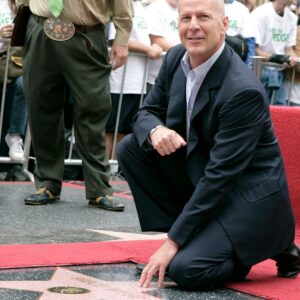Ryan Gosling is no stranger to Hollywood’s limelight, with a reputation for playing characters that range from charming romantics to hardened antiheroes. While his versatility is undeniable, there is one genre in which his talent truly stands out: neo-noir. Gosling’s performances in this genre are a testament to his ability to guide a story with a rare combination of restraint, subtlety, and emotional complexity. Neo-noir, with its dark atmosphere, moral ambiguity, and complex characters, offers the perfect canvas for Gosling’s unique acting style, allowing him to elevate the narrative and captivate the audience in ways few actors can.
The Master of Minimalism
At the heart of Ryan Gosling’s appeal is his mastery of minimalism. Unlike many actors who rely on grand gestures or extended monologues to convey emotion, Gosling embraces the power of understatement. His performances are often marked by a stillness and control that allow the smallest inflections—a glance, a shift in posture, a half-smile—to carry the weight of entire scenes. This minimalist approach is particularly effective in neo-noir films, where the characters are often morally complex, the stakes are high, and the atmosphere is thick with tension.
In the 2011 film Drive, Gosling’s portrayal of an unnamed getaway driver is a prime example of how minimalism can be profoundly impactful. The character speaks very little, yet his presence on screen is magnetic. The quiet intensity that Gosling brings to the role heightens the film’s suspense, making each moment feel taut with possibility. His ability to convey so much with so little creates a sense of mystery and allure that is quintessentially neo-noir. The viewer is drawn into the character’s world, compelled to watch his every move, even as they know very little about him.
Gosling’s silence in Drive becomes its own kind of dialogue, communicating the weight of his character’s choices and the dangers that surround him. It’s a performance that relies on restraint, and in doing so, Gosling manages to make the story feel more profound and immersive.
Neo-Noir: A Perfect Fit
Neo-noir is a genre defined by its ambiguity. The lines between good and evil, right and wrong, are often blurred, leaving the audience in a state of moral uncertainty. This is a world where heroes and villains are not easily distinguishable, and characters are often driven by their own codes of ethics rather than clear-cut moral guidelines. It is within this murky space that Gosling thrives.
Gosling’s ability to portray morally ambiguous characters with nuance and depth makes him a natural fit for neo-noir. He excels at playing characters who operate in the grey areas of life—those who are neither entirely virtuous nor entirely corrupt. Instead of trying to make these characters likable or relatable in a conventional sense, Gosling leans into their complexities, allowing the audience to empathize with them on a deeper level.
In Blade Runner 2049 (2017), Gosling’s portrayal of K, a replicant who grapples with questions of identity and purpose, showcases his talent for navigating the intricacies of neo-noir. The film’s slow pacing and dystopian setting provide ample room for Gosling to explore the internal conflict of his character. As K wrestles with the meaning of his existence in a world where the line between human and machine is constantly questioned, Gosling anchors the film with a performance that is both stoic and deeply emotional. His restrained approach allows the viewer to feel K’s sense of isolation and longing without ever becoming melodramatic or overbearing.
In the neo-noir landscape, where motives are often unclear and morality is subjective, Gosling’s ability to guide the audience through complex emotional terrain is invaluable. He provides a steady presence that helps viewers navigate the intricate plots and ambiguous moral landscapes that define the genre.
Guiding the Viewer Through Ambiguity
What sets Gosling apart in neo-noir is his ability to serve as a guide for the viewer. His characters often act as the emotional and moral compass of the film, even as they themselves are navigating uncertain terrain. Through his subtle performances, Gosling draws the audience into the world of the film, making them feel the weight of every decision his character makes.
In films like The Place Beyond the Pines (2012), Gosling plays Luke, a motorcycle stunt rider who turns to a life of crime in an attempt to provide for his newborn son. The film, which is structured as a triptych, explores the ripple effects of Luke’s choices across generations. Gosling’s performance in the first act sets the tone for the entire movie. As Luke, Gosling is both vulnerable and dangerous—a man driven by love and desperation, whose choices will have far-reaching consequences. The emotional complexity that Gosling brings to the role allows the viewer to understand and even sympathize with Luke’s decisions, even as they lead him down a destructive path.
This ability to guide the viewer through moral ambiguity is a hallmark of Gosling’s neo-noir performances. Whether he’s playing a loner with a code of honor, a man grappling with existential questions, or a criminal with a heart of gold, Gosling’s characters are always multifaceted. He invites the audience to see the world through their eyes, to feel their struggles and conflicts, and to understand the shades of grey that define their lives.
Beyond the Neo-Noir Lens
While Ryan Gosling has demonstrated his range in a variety of genres—from romantic dramas like La La Land (2016) to comedic action films like The Nice Guys (2016)—it is in neo-noir that his talent for storytelling truly shines. The genre’s emphasis on atmosphere, mood, and psychological tension allows Gosling to bring out the full depth of his performances. In neo-noir, where the narrative is often driven by internal conflict rather than external action, Gosling’s minimalist style becomes a powerful tool for guiding the story.
Even in films that are not strictly neo-noir, Gosling’s influence can be felt in the way he shapes the narrative. His ability to ground even the most stylized and abstract films in genuine human emotion sets him apart as an actor. Whether he’s playing a lone hero, an antihero, or a morally conflicted protagonist, Gosling’s performances offer a masterclass in subtlety and restraint.
In Only God Forgives (2013), directed by Nicolas Winding Refn, Gosling once again delivers a performance that is defined by minimalism. The film, with its stylized violence and moody atmosphere, is as much about tone as it is about plot. Gosling plays Julian, a man consumed by guilt and driven by a desire for redemption. Like in Drive, Gosling’s performance is marked by its quiet intensity—he speaks very little, but his presence is commanding. The film’s ambiguous narrative and dreamlike visuals are anchored by Gosling’s performance, which provides a sense of coherence to the otherwise fragmented story.
In many ways, Gosling’s approach to acting mirrors the very essence of neo-noir: it is about what is not said, about the tension that exists beneath the surface, and about the complexities that lie within every choice. By embracing these elements, Gosling elevates the genre and brings a depth of emotion to his performances that is both rare and compelling.
Conclusion
Ryan Gosling’s acting ability is best showcased in the neo-noir genre, where his minimalist style, emotional depth, and ability to navigate moral ambiguity resonate with the tone and themes of the films. In this genre, Gosling’s performances guide the story in a way that few actors can, making him a natural fit for the shadowy world of neo-noir cinema.
By mastering the art of understatement and allowing his characters’ internal struggles to unfold naturally, Gosling ensures that the story remains compelling and that the audience remains invested. His performances in neo-noir films are a testament to his talent as a storyteller, proving that sometimes, it’s the quietest voices that speak the loudest.





